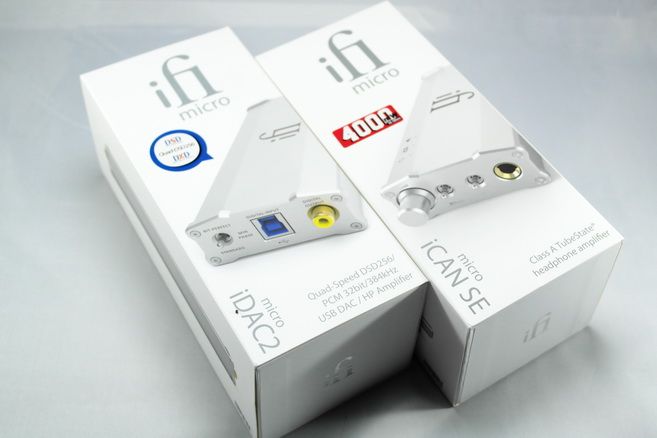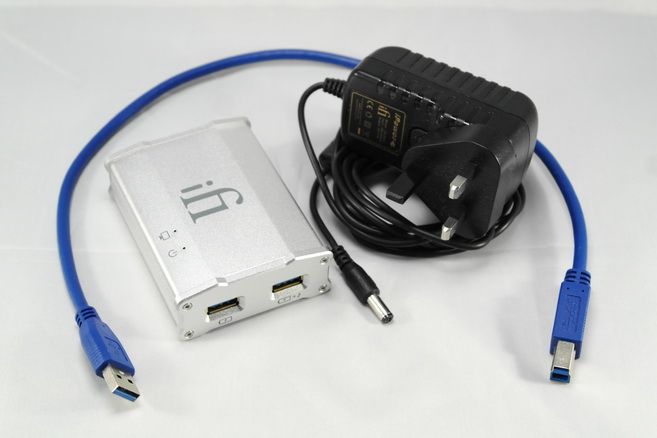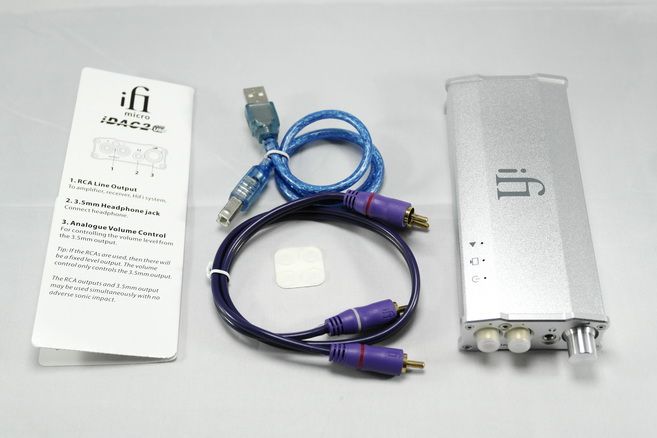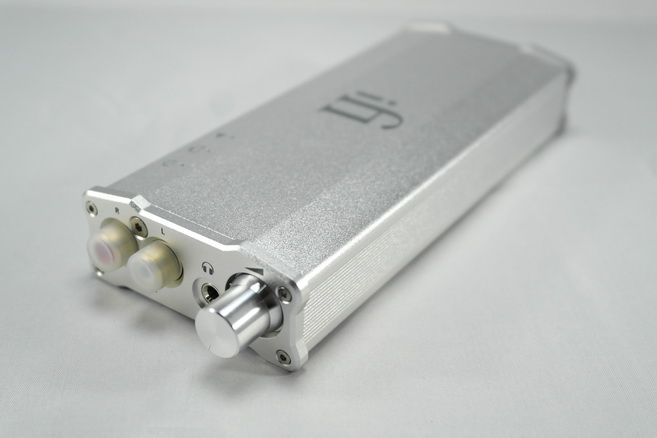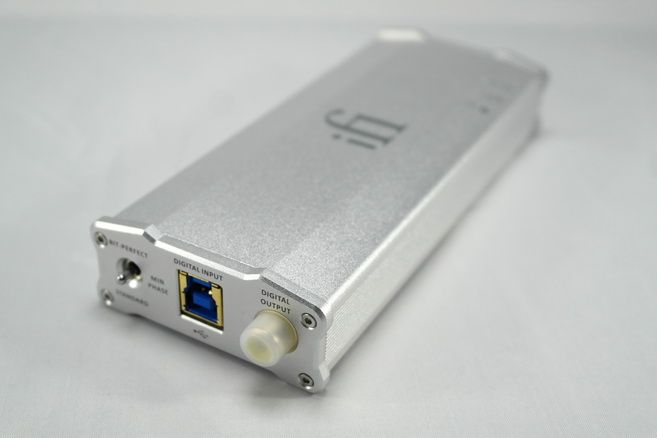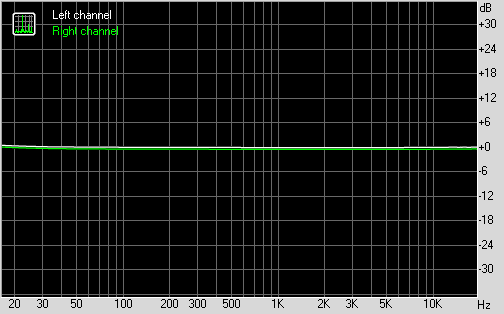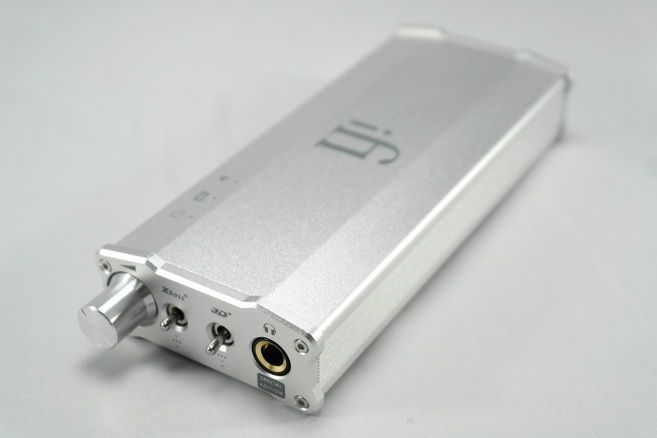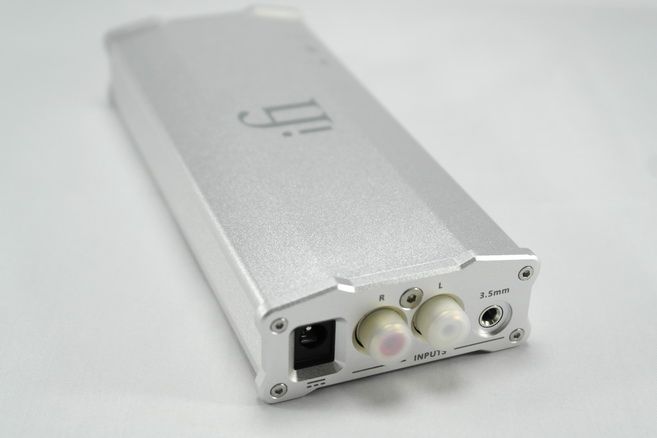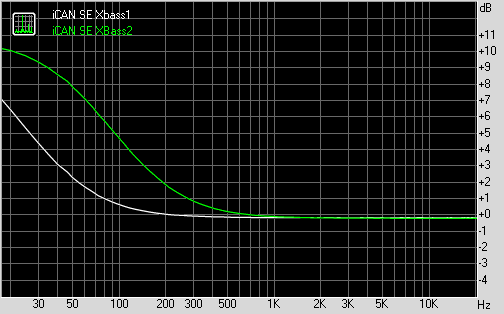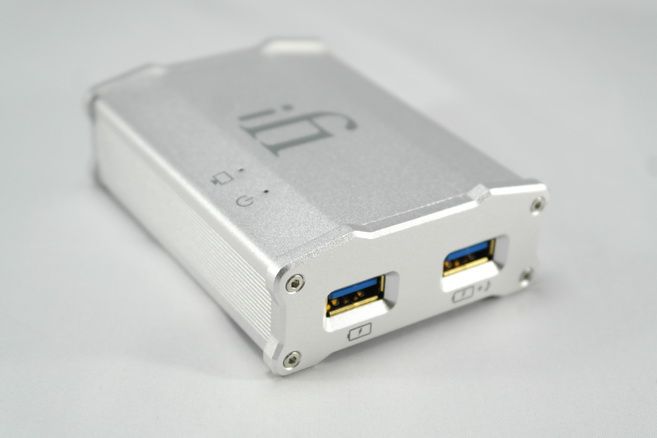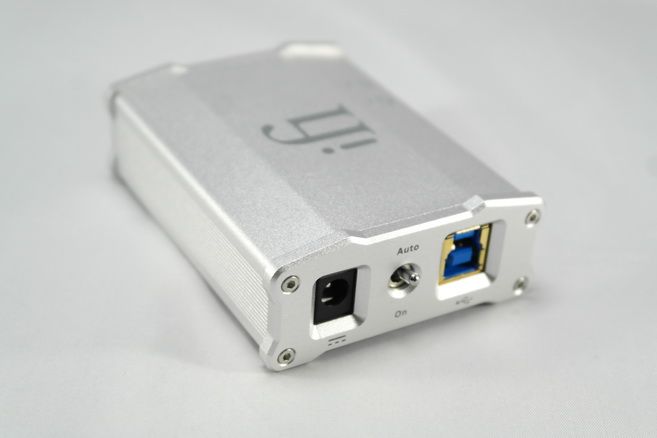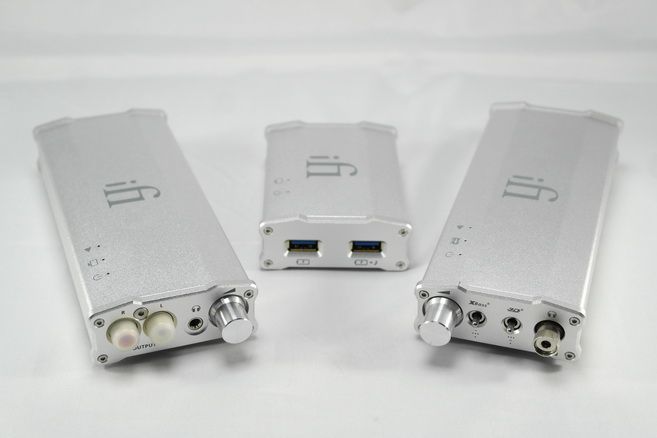Acknowledgment
The iDAC2 was provided on loan to me by iFi along with the iPurifier2. Thanks for the loan! I love reviewing. That said, the thoughts here are not for sale. They are my own. I own them.Introduction
This is my third iFi product I’m reviewing. I own a Micro iUSB3.0 and borrowed the iPurifier2 that was used during this review. I write this review now with the iDAC2 and the iPurifier2 sent back to iFi with thanks, postage and a small sense of loss. Yesterday, a fourth iFi product, the iFi Micro iCAN SE arrived. With similar timing, the Airist Audio Heron 5 arrived. It was almost like two duelling postmen raced to my door trying to see who could fire their parcel into my wife’s waiting arms faster. Those two amps are waiting as if to draw pistols at dawn, two sleek silver masses of amplification menacing each other in the close quarters of my living room with foam tiles and an 8-month old on the floor. My father once gave me a piece of advice: “if you frighten a big man, he will hurt you; if you frighten a little man, he will kill you.” I’ve never underestimated the little dog in the fight, and I won’t underestimate a $299 amp vs. a $1999 amp. It is with this impending duel in mind that this review will be presented as a series of duels.For roughly the last month I’ve carried the iDAC2, the iPurifier2 and my Geek Out V2 to work and listened daily, comparing performance with the Meze99 classic and IEMs at work and comparing performance with the HD600 at home. We’ll see which DACs in my possession or formerly on holiday in sunny Southampton marked this man. In some of the match-ups the iDAC2 is a decided underdog, and in others it should stand on relatively even footing. With a little further ado, to the review!
One last thing before we start. I’m a biased mother-listener, and if you’re honest with yourself, so are you. After the fold I give a little impression about my bias. Read it if you are interested. Or don’t. Make an informed decision.
Like most sensible people I starting falling in love with music as a child. My first portable audio device was a Sony Walkman (the cassette kind) that I got when I was 10 years old (24 years ago). I listened with the cheap Sony on ears that came with the Walkman until I bought a Koss CD boombox and started listening to UAF College Radio and 103.9 (alternative rock at the time) in Fairbanks, Alaska. I once listened to Louie Louie for 3 days straight, and I’m not insane. My musical tastes started out with listening to what my friends liked (Dr. Dre and Green Day) and what my parents liked (The Beatles, Rolling Stones, Bob Dylan) and I only really discovered my own musical tastes and sonic preferences in my late teens to early 20s. What I discovered is that I have very eclectic and some would say weird tastes. I could be listening to gay punk rock, Japanese dream garble pop, 8-bit chiptune, Scandinavian black metal, Latin guitar, the Mariinsky Orchestra, or Miles Davis, but I mostly listen to Classic Rock and Indie/Alternative. I’m a big fan of intelligent hip-hop like Metermaids, Kendrick Lamar and Aesop Rock, also.
I tend to like headphones that are all-around performers, this generally means a balanced or neutral sound. I somehow never manage to have much money, so I don’t want to buy infinity headphones to switch between my myriad genres that I play. I can hear all the way down to 10hz and all the way up to 23Khz—these are what I’ve heard doing test tones on headphones. It has been a long time since I had a test with an audiologist. I’m sensitive to peaky treble but do enjoy smooth extended treble. I like deep rich tight bass and impactful drums, and dislike upper midbass emphasis. I like my vocals crisp, so stay away from Josh Tillman’s voice you nasty upper midbass hump. I hear soundstage better than just about anything I identify in music, but my words haven’t caught up to my ears. I listen at volume levels that others consider loud (75 to 80 dB), but I just set it to where the dynamics peak. I’m not here to shatter my eardrums. I like them just how they are.
I don’t believe in using EQ, not even for inexpensive headphones, especially in reviews. I won’t claim that I haven’t done it, but I generally try to avoid it.
I’m a firm believer that cables can make a difference, but I don’t think they always do. When I tried out Toxic Cables line, none of them had labels and the cheapest looking one was the one I liked the best. I was excited that I wouldn’t have to spend much to improve my sound. It turned out that the cheapest looking one was the Silver/Gold top of the line cable. I’ve heard the difference that USB cables can make, from upgrading from the crappy cable that came with my Geek Out 1000 to a Supra USB, and then again when upgrading to the LH Labs Lightspeed 2G with the iUSB3.0. When I picked up a cheap shielded power lead from Mains Cables R Us (who also sell iFi gear) to replace my standard kettle lead on my amplifier, I heard more crunchy and clearer treble. I switched the leads with my wife blinded and she heard the same difference. I didn’t tell her what I heard and let her describe it herself. But cables don’t always make a difference. When I switched from my standard HD650 cable to a custom balanced cable (Custom Cans UK, very affordable), the sound stayed exactly the same when hooked up via a top tier (custom made by @dill3000) silver/gold 4-pin XLR to 6.3mm converter. Balanced mode made a difference in clarity and blackness of background. Your mileage may vary and you may not hear a difference, but I have.
I tend to like headphones that are all-around performers, this generally means a balanced or neutral sound. I somehow never manage to have much money, so I don’t want to buy infinity headphones to switch between my myriad genres that I play. I can hear all the way down to 10hz and all the way up to 23Khz—these are what I’ve heard doing test tones on headphones. It has been a long time since I had a test with an audiologist. I’m sensitive to peaky treble but do enjoy smooth extended treble. I like deep rich tight bass and impactful drums, and dislike upper midbass emphasis. I like my vocals crisp, so stay away from Josh Tillman’s voice you nasty upper midbass hump. I hear soundstage better than just about anything I identify in music, but my words haven’t caught up to my ears. I listen at volume levels that others consider loud (75 to 80 dB), but I just set it to where the dynamics peak. I’m not here to shatter my eardrums. I like them just how they are.
I don’t believe in using EQ, not even for inexpensive headphones, especially in reviews. I won’t claim that I haven’t done it, but I generally try to avoid it.
I’m a firm believer that cables can make a difference, but I don’t think they always do. When I tried out Toxic Cables line, none of them had labels and the cheapest looking one was the one I liked the best. I was excited that I wouldn’t have to spend much to improve my sound. It turned out that the cheapest looking one was the Silver/Gold top of the line cable. I’ve heard the difference that USB cables can make, from upgrading from the crappy cable that came with my Geek Out 1000 to a Supra USB, and then again when upgrading to the LH Labs Lightspeed 2G with the iUSB3.0. When I picked up a cheap shielded power lead from Mains Cables R Us (who also sell iFi gear) to replace my standard kettle lead on my amplifier, I heard more crunchy and clearer treble. I switched the leads with my wife blinded and she heard the same difference. I didn’t tell her what I heard and let her describe it herself. But cables don’t always make a difference. When I switched from my standard HD650 cable to a custom balanced cable (Custom Cans UK, very affordable), the sound stayed exactly the same when hooked up via a top tier (custom made by @dill3000) silver/gold 4-pin XLR to 6.3mm converter. Balanced mode made a difference in clarity and blackness of background. Your mileage may vary and you may not hear a difference, but I have.
Form & Function
The iDAC2 comes in iFi’s standard white box. It is sleek, with simple, informative graphic design and easy to pick up in your hand and easy to throw in a backpack. I didn’t throw it in a backpack, this is a loaner! I wrapped the iDAC2 in bubble wrap and put it in an appropriately sized box with the iPurifier2 and the Geek Out V2. Inside the iDAC2 box, you’ll find a pair of purple RCA cables that are just long enough to string between components in your iFi stack. So if you are rocking a Micro iCAN SE, you are all set, probably for life. That iCAN SE has some extra juice, like an orchard's worth. If you want to hook up to something more than 4 inches away, you’ll need to go buy a proper set of interconnects.Here’s a list of features on the iDAC2 from their website:
- PCM 384Khz, Native DSD256 (quad speed)
- Burr-Brown chipset
- Pure Class A amplification (Class A Tube State), with fully discrete analogue state (does HD600 enough, but not to full potential)
- RCA out for outputting to a bigger, badder amplifier
- Coaxial digital out for hooking into a Sonos or other similar device with a DAC on board (I didn’t use this, as why waste a good DAC outputting to something that changes its character)
- A feast of top-end electronic innards (Elna Japan Silmic II, TDK C0G, Vishay MELF, et al.)—this isn’t your mama’s meatloaf, unless your mama only puts the finest Kobe beef and mangalitsa pork up in that loaf.
I noticed something a bit strange with regard to vibration when trying to stack the iDAC2 on top of the iUSB3.0. With headphones hooked in and no power, mechanical vibration was heard as static through the headphones. Pressing down on the iDAC2 removes the static. I tried stroking the top of the DAC from front to back along the logo plane and found that this created a humming noise. The DAC needs a surface that absorbs vibration. I didn’t have any vibration issues with the iDAC2 sitting on my office desk at home or work, but assuring that the rubber feet are stable is key to avoiding mechanical interference.
Enjoy some pictures. I did. The stool is from IKEA, the camera is a Panasonic GX7 and the lighting is natural with some flash for good metre.
[size=24.57px]The Testbed[/size]
In this section I’ll let you know a little bit about the equipment that I’ve tested the iDAC2 with. I like listening to full size headphones, IEMs and my speakers in my two channel set-up in the living room. With an 8-month old baby, I have to get special dispensation for shutting myself up in the man-cave and ignoring the outside world. Luckily for me and you, my lady is mighty generous. The equipment used for this review was as follows:
- Wensa SPL Meter
- iFi Micro iUSB3.0
- iFi iPurifier2
- LH Labs Geek Out V2 (GO V2)
- 2 LH Labs Lightspeed 2G cables
- Supra USB Cable
- Sennheiser HD600 (panty-hose mod)
- Meze Audio 99 Classics Headphones
- Trinity Audio Atlas (orange and gold filters, Sony isolation tips)
- Echobox Audio Finder X1 (black filters, comply foam)
- 64Audio X2 (JVC Spiral Dot)
Audio quality
I ran the iDAC2 primarily with the iPurifier2, but did do a comparison using the Micro iUSB3.0 also. I love that Micro iUSB3.0 (that hyperlink is to my review, check it out if you like) but also got some listening time with my LH Labs gear (X-Infinity, GO V2, and GO 1000). The iPurifier2 and iDAC2 have been my constant companions for nearly a month. They are good company and work well together, but if I could only put my money into one, it would be the iPurifier2. In my iPurifier2 review, I used the analogy of superheroes and sidekicks. While my affection was more for the sidekick on this occasion, I still enjoyed the iDAC2.In general, I found that the iDAC2 sounded better with some help from the iPurifier, or the Micro iUSB3.0. On Kraftwerk – Kometenmelodie2 the iDAC2 flying solo smeared some treble detail, but with the iPurifier2 the treble was cleaned up and more detailed. When listening to Mavis Staples – If It’s A Light backing vocals are more distinct when the iPurifier2 is added. Mavis’ lead vocal has tighter definition and the bass track has more groove with the iPurifier2. On Teddy Thompson’s cover of Leonard Cohen’s brilliant Tonight Will Be Fine, vocals are on display with just a touch clearer image with a blacker background and better instrument spacing.
iDAC2 vs. GO V2 (the terrific 2s)

I took the iDAC2 to work in my Havit I8 box with bubble wrap protection, which happened to be just the right size to fit the iDAC2, the iPurifier2, a Lindy USB3.0 B to A adaptor, and the LH Labs Geek Out V2 (GO V2). I duelled these two DACs for the better part of a month. I hooked up both with the iPurifier2 and played the Tidal HiFi Before the Beatles playlist. On Johnny Leyton’s – Johnny Remember Me, the iDAC2 was clear, but had a touch of static, adding the iPurifier2 cleared this up. Compared to the GO V2 with the iPurifier2, the iDAC2 has less height in its soundstage, and less tight treble. The GO V2 sounds more full, with more natural guitar plucks. The guitar sounded brittle compared to the GO V2 with the iDAC2 paired with the iPurifier2. I observed a similar differences with Regina Spektor – Hotel Song; the iDAC2 sounded thinner. On Bjork – Stonemilker, the iDAC2 was brighter with slightly rougher treble. Both had roughly the same power thrown into the HD600. I’m not convinced that the GO v2 is operating at 1W of amplification, the number is probably a bit misleading.
The iDAC2 and GO V2 are both varieties of neutral. Both are very good sounding DACs, the GO V2, at the same price, is excellent. I think that some folks will prefer the iDAC2, those who like a leaner slightly more treble accentuated sound. The GO V2 has a fuller sound, with a more natural timbre and a bit more precision to the sound; the iDAC2 has a bit more treble extension but doesn’t win on treble definition versus the GO V2. I preferred the GO V2 with the iPurifier2 to the iDAC2 with the iPurifier2. The little pocket-size dongle won the duel.
iDAC2 vs. Pulse X-Infinity (snipers on the ridge?)

I conducted a comparison between the iDAC2 and the Geek Pulse X-Infinity via the Micro iUSB3.0, and the iDAC2 mostly held it’s own. The signal chains were not perfectly identical, so there may be some bias in the comparison. The signal chain for the iDAC2 was HTPC to Micro iUSB3.0 via Supra USB cable, Micro iUSB3.0 to iDAC2 via LH Labs Lightspeed 2G (split power and data) USB cable, iDAC2 with the HD600. The HD600 was volume matched using white noise to 75dB for both setups. The HD600 was playing balanced off the X-Infinity and unbalanced from the iDAC2. I also did this comparison with speakers, with thei DAC2 outputting to the Cambridge Audio azur 540A via Van Den Hul MKIII interconnects, and the Cambridge Audio azur 540A to 28 year old Mordaunt Short speakers. The speaker-based comparison set-up was the same for the X-Infinity, but with different interconnects, the Atlas Element Integra. It very well may be that is a driver in the differences, because later I compared the Atlas to my Audioquest Evergreen, and the Atlas was clearer with an expanded soundstage. I’ll be picking up a second Atlas Integra for future comparisons (it deserves the What HiFi 5* rating). I’ll present the HD600 comparison first, and then the speaker comparison.
When listening to Kraftwerk – Kometenmelodie2 (a good treble torture test) I found the treble a bit shrill at the beginning. This shrillness reappeared later. Instrument separation was excellent. The stage width was sleightly wider than the head, depth about the size of the head, and height extended to the top of the head. The treble remained emphasized and a bit hot.
With the X-Infinity, the highs were still shrill—it’s just how Kometenmelodie2 plays—but the treble was a touch smoother, a little more restrained. Depth was greater with the X-Infinity (just sleightly out of head), width was a touch narrower (like an inch or so), and height was the same.
When playing the same tune via speakers, the X-Infinity had a sound stage that lept into the room and shouted down from the ceiling. The stage thrown from the iDAC2 was 2 to 3 feet shorter and didn’t extend as far into the room in width or depth. The edges in treble expression were maintained from the HD600 comparison.
With the HD600, I found the iDAC2 and X-Infinity tightly matched. Both are very capable. But I found the increased depth and slightly more pleasant treble gave the X-Infinity the edge. The iDAC2 took one in the shoulder, but walked away from the duel alive and with some honor intact. As a pre-amp, the X-Infinity set up on high ground, with a 34” barrel length, 70 caliber Sharps rifle. It only would take one shot from that sucker to fell a dang buffalo, but the X-Infinity was quick to reload. It wasn’t really a duel, it was a low down dirty assassination, but it was fun to listen to.
Headphone pairings
I played the iDAC2 with a lot of headphones. My favourite pairing was probably the 64Audio X2. The X2 has a little bit of roll off in the treble, so synergizes well with the treble lift on the iDAC2. If you tend to like treble rolled off headphones, you’ve probably got a great pairing on hand for the iDAC2. I could see the mid-centric Oppo PM-3 being a good match, from memory (I didn't have one on hand). I also enjoyed the iDAC2 with the Echobox Finder X1 IEM. The Finder X1 likes the power on hand on the iDAC2 and takes nearly as much on the volume knob as the HD600. I’ve recently discovered that, contrary to my preconceptions the HD600 will take a crap ton of power if you give it and will scale with that power. The iDAC2 and the GO V2 can’t drive the HD600 to its full potential. You can drive the HD600 to loud enough volume with lots of amps, but the sound stage and dynamics need more power. I’m getting a dose of that right this minute listening to the Airist Audio Heron 5 playing some live recorded DSD128 via the GO V2. It is absolutely stunning. When someone tells you that something is fully driving the HD600 that isn’t a mega-amp, they probably don’t know what they are talking about. On that note, people saying the Chord MoJo drives the HD600 or HD800 well don’t know what they are talking about. It isn’t a flaw of the iDAC2 that it doesn’t squeeze every ounce of capability out of the HD600, because the HD600 has consistently presented me with surprises on what it can do. Between the Chord MoJo and the iDAC2, the MoJo wins that DAC battle (though I didn't have a MoJo on hand). The MoJo is one of the most organic sounding DACs I've heard.The iDAC2 worked okay with the Meze Audio 99 Classics, but both have tendencies towards sharper treble, so it wasn’t as good a pairing as it could have been.
Conclusions
The iDAC2 didn’t win any of its duels in this review, but it came armed with a good revolver and didn’t always end up in a casket. I enjoyed listening to it. I think that it is best paired with the iPurifier2, as it provided a marked improvement in transient response, and improved clarity, soundstage width and soundstage depth.When it comes to value, there isn’t yet much distribution of the GO V2 in Europe, but you can get the iDAC2 readily. Annoyingly, the best prices are in the USA (stupid VAT) for the iDAC2. I’d appreciate it if iFi stopped selling the iDAC2 for less money in continental Europe than in the UK. The USA retail price of both the iDAC2 and GO V2 are $299, but in Europe you’ll have to deal with shipping and customs costs. I preferred the GO V2 to the iDAC2, but it isn’t a day and night difference and others will prefer the presentation of the iDAC2.















